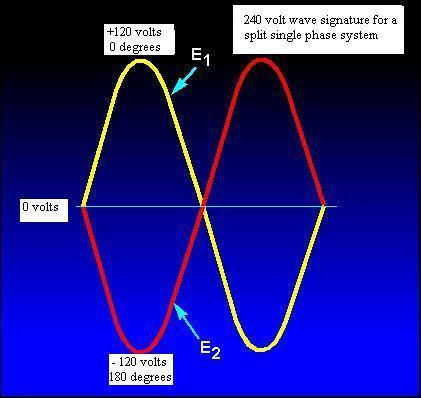Voltage Differences: 110V, 115V, 120V, 220V, 230V, 240V
You'll often hear voltages in your home referred to as 110V, 115V, or 120V. This can be confusing but the bottom line is they are referring to the exact same thing. 120V is the AC voltage on a single hot wire in your home with respect to neutral (or ground). With resistance in the wiring in your house, this 120V will likely have dropped to 115V by the time it gets to the appliance you are powering. At the end of a long extension cord you could even drop to 110V. This is why you'll see the different terms used. In fact many appliances or devices will be rated to 110V or 115V which basically tells you they are tested to operate down to a lower voltage. This gives you assurance that at the end of a long circuit or extension cord it will still operate fine.
In the United States, utility companies are required to provide a split-phase 240V feed to your house. This consists of two legs of 120VAC that are 180 degrees out of phase with one another. The picture below depicts one 120V leg in red and another in yellow. The 0V line in the middle is the voltage of your neutral line. AC power oscillates at 60 cycles per second (60 Hz) in the U.S. Other parts of the world use a 50Hz standard. The AC voltage oscillates from +120V to -120V. With the two legs feeding your house being out of phase, can you pick up 240V AC by using both legs rather than one leg and neutral. When you use both legs to feed a circuit, like a range or water heater, you end up with twice the voltage (a line that oscillates from +240V to -240V). The neutral wire is not utilized in a 240V circuit as the current is fed by one leg and returned on the other leg.

A word of caution...when you see something labeled 208V or 480V these are not the same as what is described above. These voltages refer to 3-phase power systems, more typically found in commercial or industrial applications for large motors and other equipment. These power systems are 3-phase where 208V is the voltage between two phases of a Y-connected circuit that is 120V from neutral to any single phase. 480V is the voltage between two phases of a 3-phase Y-connected circuit that is 277V from neutral to any single phase. Do not attempt to connect a motor or any other equipment designed for 3-phase power to a 2-phase power system like that feeding your house. It will not work and you will damage the equipment and be sorely dissappointed.
